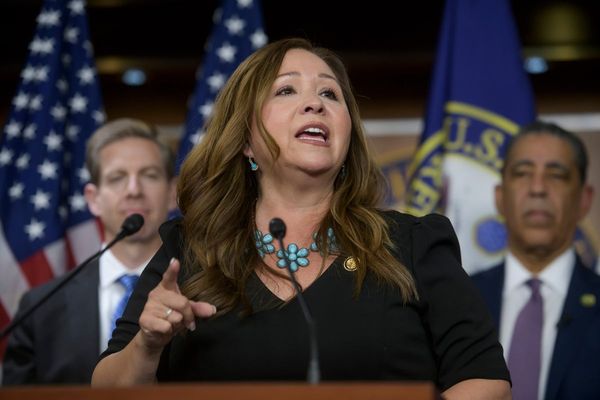
Woolworths is cutting prices on hundreds of products from Wednesday, raising hopes the supermarket sector is entering a new period of intensifying competition, colloquially known as a price war.
But after a bruising period for the supermarket sector, marked by allegations of price-gouging during a cost-of-living crisis, shoppers may be sceptical of seeing any relief.
Is the era of fast-rising grocery prices and supercharged supermarket profits really coming to an end?
Why is Woolworths cutting prices?
Australia’s big supermarket chains, Coles and Woolworths, suffered dramatic hits to their reputation over the past 18 months, as public anger about grocery prices and concerns about the treatment of agricultural suppliers sparked government and regulatory inquiries.
Research house Roy Morgan noted earlier this year that the supermarket giants had become some of the most distrusted brands in Australia amid “allegations of price hikes and profit-driven strategies”.
Woolworths, the country’s biggest chain, fared worse than Coles – in public perception and sales – because of a particularly combative appearance before a parliamentary inquiry and a high-profile industrial strike at some of its warehouses that left shelves empty in the lead-up to Christmas.
While the two big supermarkets offer mirror-like products and pricing, there was also a perception that Coles, using its “down down” campaign, was cheaper than Woolworths – a great advantage in a cost-of-living crisis.
“Trading momentum in terms of sales is very important, and that momentum is very hard to get,” says Hailey Kim, an investment analyst at Wilson Asset Management.
“Once you have it, it lasts many quarters. If you look at the last few quarters, Coles has been a leader in terms of that trading momentum.”
In response, the Woolworths chief executive, Amanda Bardwell, in February announced a $400m cost-cutting program, with some of those savings earmarked to pay for price cuts to about 400 products.
“The decision to cut prices on this many items is a bit of a signal that they commit to regain some customers,” Kim says.
Is it a price war?
After a year-long review, the competition regulator found in March that the major chains were among the most profitable supermarket businesses in the world, and that they increased prices during a cost-of-living crisis to boost profits.
The supermarket sector is one of the most concentrated among comparable economies, and described by the Australian Competition and Consumer Commission as an “oligopoly”.
The University of Sydney supermarket researcher Lisa Asher says there is not enough competitive pressure in Australia to have a genuine price war.
“It would be lovely if there was one but the market conditions do not mean that we will see one,” Asher says.
“We do not have enough competition in the market to create a price war.”
Many of the announced savings are modest. For example, Woolworths is dropping the price of its own-brand tomato sauce from $2.10 to $2, while a 12 pack of Maggi Noodles is being reduced from $10 to $9.
One investment manager tells Guardian Australia they expect Woolworths will accept a stable profit margin, rather than an rising one, over the near term to gain some sales momentum. But the manager believes the big chains will refrain from being too aggressive on pricing.
“There won’t be flat-out competition between the majors because that would be negative for both of them,” the manager says.
Bardwell said on Monday families spending $150 on their weekly shop would save about $15 a week by buying the reduced items, marking “the start of a real, tangible change”.
“This isn’t just a short-term promotion; it’s about lower shelf prices on the products we know customers regularly shop for, and providing genuine, lasting and dependable value they can count on,” Bardwell said.
Woolworths has pledged to keep the products at their new prices “at least until 2026”.
Coles will need to decide whether it follows with its own reductions.
What happens next?
While a price war is unlikely, the cuts are still a welcome development directly linked to the intense public scrutiny of the sector, which is set to continue.
The re-elected Labor government has promised to strengthen competition and consumer protections, including improving transparency of grocery prices, price trends, promotions and loyalty programs.
The supermarkets are also defending allegations by the regulator they misled shoppers by offering “illusory” discounts on hundreds of common supermarket products, with those proceedings still in their early stages.
There are still regular examples of shrinking products appearing at supermarkets – an issue that fuels distrust among shoppers. (For example, Woolworths is selling a smaller Brut deodorant stick for double the unit price of the product it replaced.)
And there are concerns that when public scrutiny subsides, the supermarkets will use their market power to expand their profit margins at the expense of shoppers and suppliers, as they did during the inflationary period.
Asher says more frequent sector scrutiny is needed, given long lags between previous inquiries.
“We shouldn’t be waiting until food prices [increases] get out of control before looking at it,” she says.
“The approach should be more considered and structured, as opposed to reactive.”







